Informacijos mokslai ISSN 1392-0561 eISSN 1392-1487
2020, vol. 89, pp. 17–33 DOI: https://doi.org/10.15388/Im.2020.89.37
Art Gallery Visitors’ Motivations
Virginija Jurėnienė
PhD, Professor, Vilnius University Kaunas Faculty, Muitinės st. 8, LT-44280 Kaunas
email virginija.jureniene@knf.vu.lt
Dovilė Peseckienė
MA, Vilnius University Kaunas Faculty, Muitinės st. 8, LT-44280 Kaunas
email address: dovile.stirbyte@gmail.com
Summary. The article discusses the motivational factors of visual art institution consumers. Analysis includes Falk’s identity-related theory of motivation for visiting art institutions that discusses how visitors’ experience begins before visiting a museum and is focused on the consumer’s attitude (identity) validation. Consumers’ motivation to visit an art institution depends on not only the proposals provided by the institution and their value to the consumer, but also on accessibility, the environment, and the personnel’s communication. The article introduces the motivations, expectations of consumers of the services provided by Kaunas Picture Gallery as well as evaluation of the services and infrastructure provided by the organisation obtained during study Visitors’ Expectations in Visual Art Institutions.
Keywords: Art gallery, visitor, motivational factors, J. Falk, accessibility and infrastructure, Kaunas Picture Gallery.
Received: 01/12/2019. Accepted: 01/03/2020
Copyright © 2020 Virginija Jurėnienė, Dovilė Peseckienė. Published by Vilnius University Press. This is an Open Access article distributed under the terms of the Creative Commons Attribution Licence, which permits unrestricted use, distribution, and reproduction in any medium, provided the original author and source are credited.
Introduction
The agenda of public and private sector organisations that provide products and services pays special attention to the consumer and satisfaction of his/her expectations. Activity of consumers and their level of engagement into the activities of an organisation are one of the criteria for organisational activity measuring (success). Culture and art institutions are not an exception.
During the recent decades, art galleries and museums have been undergoing a change; most of them aim at acting as not only closed organisations providing art and cultural products for an exceptional consumer, but also as organisations relating to business, social, ecological, innovations and other areas. Increasing communal, economic and social roles of the participants of this sector promotes exploring the motivations and behaviour of the consumers of these institutions, reveal consumption and non-consumption of their offers and identify various consumer-related aspects that help to know the consumers’ expectations and needs better.
Aim of the article: to analyse motivational factors of the consumer (audience) to consume the services provided by visual art institutions.
Research object – motivational factors of consumers.
Research methods. Review and analysis of relevant scientific literature sources, visitors’ survey and semi-structured interview methods.
Theoretical insights. Visual art institution visitors’ motivations
From the marketing point of view, each person has a set of needs that are satisfied by means of products, services, ideas and experiences. The goal of marketing is to reveal these unknowns and use them to prepare marketing plans and relate them to the mission and goals of an institution. Evaluation of visiting a museum or gallery is related to consumer motivations.
There are an existing variety of distinguishing visitors of visual art institutions according to the following specifics:
1. Visitors’ attitude towards the aspects of art;
2. Visitors’ relationship with a particular institution;
3. Visitors’ motivation to visit a particular institution;
4. Visitors’ identity-related experience (Falk, 2009).
The third group is related to the visitors’ experience that relates to their motivations during a visit to a visual art institution. Ahola and Uusitalo (2008) suggest the following three main aspects that motivate visitors:
1) knowledge (desire for knowledge, intellectual improvement and learning, interpreting coded meanings; it relates to self-construction and encompasses socio-cultural aspects, dependency on the community or society; desire to identify and know internal history);
2) aesthetic satisfaction (new experiences, aesthetic satisfaction and variety in the daily routine);
3) social motivation (to satisfy one’s social needs, i.e., meet friends, spend time among people or increase one’s personal status by showing interest in art and culture as well as knowledge). Despite the fact that this is a secondary reason to visit a museum, this dimension is important when planning a well-rounded experience in a museum. In this category, it is especially important how cafés and shops where one can spend time in and communicate with others are planned out.
According to Kotlers (2008), the major part of visitors can be divided into the following four categories according to their motivations and experiences; these categories satisfy the visitors the most.
Social experience – related to other visitors.
Experience of an object – dependency on objects and content.
Cognitive experience – emphasises interpretation or intellectual aspects of experiences.
Internal experience – the attention is paid to personal visitors’ reflections that are mostly evoked by the content of a museum.
Doering and Pekarik distinguish visitors according to these motivations, adding visitors’ desire to strengthen their identity through associations with the themes presented in a museum and the aim to continue one’s self-education intellectually, culturally, emotionally and socially (Kotler, 2008; Doering 1999; Doering, Pekarik, 1996).
A special discussion is required for Falk’s theory of visits to museums related to an individual’s identity. Audience research and psychographic aspects have been an interest to scholars for several decades (Goffman, 1959; Hood, 1991; Hooper-Greenhill, 2000); however, in the beginning of the 21st century, Falk actualised the importance of researching this perspective and provided important insights that help to better understand the experiences, motivations and needs of visiting a visual art institution.
Falk claims that visitors use museums to satisfy identity-related needs that relate to not only satisfaction in art, but also such monuments as search for appropriate place to spend an afternoon while one is visiting the city. Visits to museums are a unique experience defined by a person, his/her needs and the schedule for the day in specific place and moment (Falk, 2009).
An individual has many identities: internal and external, personal and group, large and small that reflect how we perceive ourselves and how others perceive us. The big “I” relates to constant things such as gender, race, age, and ethnic group. The small “i” is much more flexible and relates to interests and motivation (Christidou, 2010). An individual can be motivated to go to museums because s/he wants to make their children’s educational process easier. A person chooses to go to the same or another museum on a different day because the organisation and its content resonates with his/her personal interests and curiosity in one way or another. Due to different identity-related needs, the nature and quality of a visit to a museum differs.
Falk emphasises that a transition from demographic features to identity-related motives does not mean that an institution must offer various different events and exhibitions; however, it must see itself as an institution that introduces not one, but a wide spectrum of experiences. Better understanding of audience experiences and how visitors understand an institution helps the institution to use this in order to better serve the society (Falk, 2016). Categories of identity-related types as defined by Falk are introduced in Table 1.
Table 1. Falk’s typology of identity-related visitors
|
Title of type |
Meaning |
|
Explorers |
Visitors are motivated by curiosity and knowledge. |
|
Facilitators |
Visitors interested socially: they bring their children, interact with their families in the context of a museum. A museum acts as a medium and place for a dialogue. |
|
Professionals/hobbyists |
Visitors are closely related to the content of a museum by means of professional or hobbyist-type passion. Their visits are motivated by the desire to satisfy oneself with specific content. |
|
Experience |
Visitors who see a museum as a place to generate their experiences. Their satisfaction comes from “I’ve been there, I’ve done that”. |
|
Rechargers |
Visitors who look for contemplation and spiritual or restoring experience. They see a museum as a shelter after a working day or look for confirmation of their religious beliefs. |
|
Respectful |
Visitors who feel the duty to pay respect to their history and memorials. |
|
Affinity seekers |
Visitors who are motivated b a museum or exhibition that relate to their heritage or personal aspects. Seekers of confirming themselves and their identity (belonging to a community). |
Source: Falk, J. H. 2009. Identity and the Museum Visitor Experience. Walnut Creek, CA: Left Coast Press.
It is important to note that the types of visitor categorisation do not stand for one specific identity in every case. As Falk points out, family-related motivations are often understood mistakenly. For example, if visitors bring their families, it does not mean that both or one of the parents belong to the group of facilitators. During a visit to a visual art organisation, they can switch roles and become explorers and join the group (family) by the end of the visit. The switch of identity roles occurs during a visit when a visitor can be both a facilitator and an explorer.
Visitors come to visual art institutions with preconceived expectations and needs. They use a museum as a tool to satisfy their expectations and recall their experience after the visit. Consumers visit visual art exhibitions and events to know something new or gain new experiences less frequently. During a visit, they aim at confirming their identities and attitudes. If it is successful, visitors feel the highest level of satisfaction, the need to return and continue using such services (Falk, 2009).
Consumers visit art institutions due to different motives and needs. Some of them seek knowledge, others seek to satisfy their social needs, others primarily focus on aesthetic or internal experience. Visitors’ needs depend on the level of their engagement into the activities of an organisation. A random visitor seeks to satisfy certain needs (satisfaction in a service), while a visitor who is more engaged into the activities of a museum (member, sponsor or donor) has different characteristics (obligation, volunteering, time and finances) and values created by the process (status, strengthening of self-worth, sense of meaning).
Museum consumers come to an organisation with previous experiences, preconceived opinions, values, attitudes and outlooks. Visitors use a museum in order to confirm their identities and attitudes.
Significance of the infrastructure of a visual art institution and its accessibility aspect in the process of consumer satisfaction
Not only objects, but also artefacts and art processes (religious and programmes) as well as related experiences and other benefits and values provided by an organisation are important in visual art institutions. Kotlers (2008) use the concepts of main and augmented services in a visual art museum. The main services are those that related to artwork and collections, whereas the augmented (i.e. expanded) ones encompass services that complement the services package of a museum. These include restaurants, recreational areas, orientation signs, personnel politeness and helpfulness, accessibility, parking lots, lighting, etc. (Kotler, Kotler, Kotler, 2008).
Studies carried out by Hood show that the fact that audience do not pay frequent visits to a museum is not highly related to exhibitions or offers of the museum. Atmosphere, physical and psychological comfort and reassurance that it will be possible to take on the space and the “museum code” are very important aspects. The visitor finds it important to feel that a museum honestly welcomes diverse and wide audience (Hood, 1991).
Studies carried out in the United States and United Kingdom proved that the main factor that determines potential consumers’ visits to a museum is not the quality of the collection but rather the environment and personal interaction with the collection (Waltl, 2006).
Museum architecture, i.e., exterior and interior as well as the design of the exhibition, is important in satisfying the visitor’s needs. Sometimes visitors come to see a special exhibit, new building or special effects. Architecture and interior design provide a certain kind of experience in a museum and also attract additional consumers and increase the level of expectations (Zbuchea, 2008). Additional services (a café, a reading room, a shop) increase attraction of visitors and determine stronger and more positive memories in the context of the museum visit experience. All commercial services of the museum must be accompanied by special marketing strategies (Zbuchea, 2008).
An important infrastructure-related aspect is the accessibility of an art object (product or service) that is not unambiguous and relates to not only physical needs. Accessibility stand for ensuring conditions to consume a product or service. It is related to creating conditions for various different social groups to equally participate in the activities of visual art institutions. In this modern day society, the issue of accessibility is mostly related to the disabled persons; however, the accessibility barriers might not be only physical, but also mental (for instance, the process of perception of modern art that requires additional knowledge and symbolic capital). Thus, in this aspect, the increase of accessibility means not only the exhibitions that have additional explanatory material, but also it comes with labels, texts, references, maps, plans of exhibits, and the material that helps one to find orientation inside of an art organisation building (Kotler, 2003). The issue of accessibility also relates to the behaviour of the museum personnel towards the visitors, which, according to Kotler, should be pleasurable rather than intimidating.
Aesthetics and cultural looks as well as comfortable plan of a building are an important part of every visual art organisation that is important in not only ensuring the supervision process for the artefacts displayed 24/7, good quality workplaces for staff, but also in creating comfortable conditions for art accessibility for various social groups and their needs. Consumption of museums and gallery artefacts, collections, services and ideas is ensured by the infrastructure of an organisation, i.e., environment and systems that enable not only comfortable accessibility of art products and services, but also their cultural presentation to the society with additional material that makes art perception easier. Visual art institutions as organisations representing one interest must serve all groups of society and create convenient conditions for consumption of its cultural products and services for groups that have various specific needs, i.e., disabled people, older people and families with kids.
Results of Empirical Research
Research object: Consumers of M. K. Čiurlionis National Art Museum Kaunas Picture Gallery.
Two following methods are used to collect research data: surveying and semi-structured standardised interview. Research data was collected from 17 July 2019 to 25 August 2019.
First stage. Sample of the survey – 226. The survey was introduced in an electronic form online on the surveying webpage www.apklausa.lt. 54 responses were collected via this channel. 172 paper surveys were submitted in a written form. Most printed surveys were taken in Kaunas Picture Gallery; a part of them were distributed in other visual art institutions and cultural organisations that have direct relationship with the aforementioned gallery.
Second stage. Semi-structured standardised individual direct and indirect interview. In order for the data to be organised and compared, the same data collection instrument shall be used for all the interviews. Research instrument – semi-structured questionnaire. During the study, ten interviews with museum representatives and active managers, curators and directors of institutions of Kaunas visual art field were carried out and transcribed. Selection of respective experts was motivated by their relationship to the Kaunas Picture Gallery: all the respondents are in some way directly related to the museum activities; they periodically implement their ideas there.
Habits and motivations of gallery visitors
One of the main aspects of visitor studies is their habits and motivations of visiting a visual art institution: how often visitors visit the events of an organisation, who they visit the organisation with, what encourages them to visit and what the occasions are, what motivates the visitors to visit a gallery and what experience consumers look there.
When asked how often they visited the Kaunas Picture Gallery, the respondents could select from five options, i.e., I have not visited the gallery (3%), I have visited the gallery once or twice (27%), I sometimes visit the gallery (1-2 times a year) – 23%, I periodically visit the gallery (2-4 times a year) – 24%, I am a constant visitor of the gallery – 23%. The frequency of visits to the gallery is introduced in Figure 1.
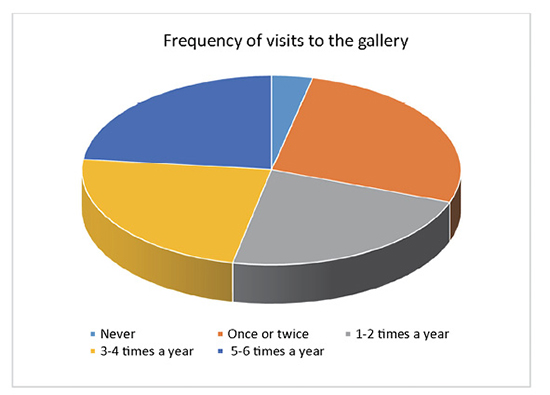
Fig. 1. The frequency of respondents’ visits to the gallery
When asked how they found out about the Kaunas Picture Gallery, 20% of the respondents claimed not to have the recollection. 26% of the respondents chose another option adding their own line: “I live in Kaunas, I know what institutions there are in Kaunas”, “I have been aware of it from my childhood”, “I live in Kaunas and have been visiting it since it opened”, “I have always known”, “I just know, I am from Kaunas”. The remaining 56% separated into various small segments: from parents – 6%, from friends – 11%, from teachers – 7%, from colleagues – 4%, through social networks – 12%, from media – 10%, in café Kultura – 4%.
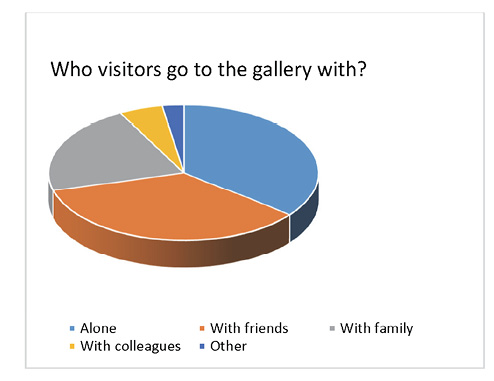
Fig. 2. Habits of visitors’ visits to the gallery
The frequency and information about visits on how visitors found out about the gallery and its activities show that over half of the respondents (60-70%) were regular or constant consumers of the services provided by the gallery that have formed habits of visiting the organisation.
The Kaunas Picture Gallery visitors pay visits alone (36%) or with friends (35%). The remaining respondents visit the gallery with their family members (21%), with colleagues from work (5%); other options (“It depends” or “With foreigners”) were chosen by 3% of the respondents. Respondents’ distribution according to who they visit the gallery with is presented in the diagram in Figure 2.
Expert No. 5 confirms the results obtained during the study and claims, “Majority of people come to exhibits alone because they come to educate themselves and distance themselves from the daily routine. Part of the visitors visit exhibits with friends who think alike and have the same scale of values.” Expert No. 9 claims, “On weekends, families come to the gallery. On working days, it is mostly visited by those who have a closer relationship and professional relations with art. Tourists visit the gallery in summers.” According to Expert No. 8, “Visitors come with friends and families”.
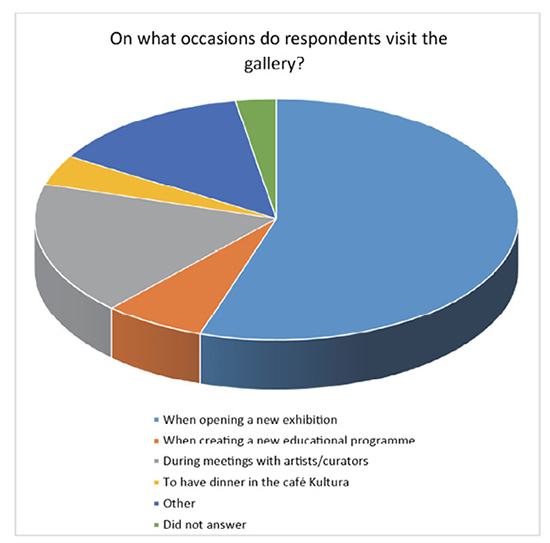
Fig. 3. On what occasions visitors visit the gallery.
Most of the visitors of the visual art institution wait for exhibitions’ openings (55%). A new educational programme interests 7% of the visitors. Meetings with artists and curators attract a higher number of visitors (18% of the respondents). 4% of the respondents visit the gallery when they come to have dinner in the café Kultura (14% of the respondents). “When I want to”, “When I come to Kaunas”, “While participating in and visiting the exhibitions”, “During my time off work”, “When something that interests me is happening”, “When I want to show something interested to pupils, students, friends from other cities, countries or just to spend cultivated free time, meet friends in a spiritual,educating environment” and others. Gallery events according to the frequency of visits are reflected in Figure 3.
Visual art experts notice this distribution tendency as well. Expert No. 6 claims, “The highest number of visitors come during openings or on weekends of an opening. Educational events and other events that come with the main exposition are visited less frequently; however, these activities are important for the aspect of audience development and the image of the organisation.” Expert No. 3 claims that the most visited are “openings, especially if they come with certain additional entertainment, a concert, etc.” Expert No. 8 says, ‘Openings are visited the most due to curiosity, artists’ names and free accessibility.” According to Expert No. 7, “An opening is always a big event that attracts many people. Such events aim at creating a network, share contacts and social communication.
It is important to note that when asked whether the main exhibition that comes with an extensive programme of complementing events has impact on the popularity of the event, the experts fell into two groups. Some of them claimed that of course. “Different events and educational programmes enable reaching different audiences (Expert No. 8). “Of course, when there is a comprehensive programme, it is a way to get to know the main tendencies (Expert No. 5). Others claim that the content of an exhibition is more important: “The popularity of the event is impacted by the artist, but not the quantity of events revolving around the exhibition” (Expert No. 10). “It does not depend on the number of events but on what is displayed and on the content as well” (Expert No. 9).
One of the most important aspects in the studies of visitors is their motivations to visit a gallery. As the theoretical part of the paper shows, visitors’ motives are widely studies by researchers and institutions themselves from different perspectives. Experts in Kaunas visual art sector claim to have thought about visitors’ motivations and needs; however, a big part of them emphasise that in order for these aspects to open up, more attention should be paid and experts plan to take this into account in the future (Expert No. 5, Expert No. 7, Expert No, 3). According to Expert No. 1, visitors seek “intellectual perfection, leisure, entertainment in a museum. Visits to the museum are also determined by recommendations, interest in relatives’ creations.”
According to Expert No. 7, the main visitors’ motivations are “to spend quality time, to get to know something new, to spend time with friends or family.” According to Expert No. 3, “People are cloyed with various things more and more often and they seek something new and unexplored. I believe that for a human being who is not related to art, this means leisure. There are such exhibitions that inspire to do something after a visit. It inspires and promotes creativity.” According to Expert No. 4, “Students often come once because teachers bring them. Older women are motivated to come by their interest in art. They want to spend time with their female friends, Students are motivated by curiosity in what takes place in the field of art. Everyone has different motivations.”
Expert No. 6 defines visitors’ motivations as follows: “A niche audience [participants of the art field] need to see a new exhibition. Others need to rest from their daily routines. To learn, invest into oneself, to find out something new. A part of the visitors come to take pictures [the category of “I have been there I have done that”]. According to Expert No. 2, seniors prefer being among people and spend time. Participants of excursions and educational events are motivated by the desire to know more, improve, learn rather than play.
According to Expert No. 10, “Gallery visitors come to exhibitions when motivated by their general interest in art and culture. Therefore, they want to be a part of the community. Visitors are interested in specific relevant topics. Curiosity. Wish to improve as a personality and find out something new. Also, emotional relations. Motivations are very general and more sensory. Some people see one topic more interesting, others – another topic. Sometimes it is quite complex to evaluate this; thus, the regards is relative.” Expert no. 8 claims that the main motivations of visitors are socialisation, aesthetic experience, informal knowledge, getting to know other cultures.
The results of a previous survey show that the Kaunas Picture Gallery visitors are mostly motivated by the opportunity to spend weekends purposefully (21%) and intellectual improvement (20%). Visitors find positive emotions experienced in the context of the museum important (16%). 12% of the respondents seek for aesthetic satisfaction in a the visual art organisation, while 10% of the respondents are motivated to visit the gallery by social inclusion and communication with people. 9% of the visitors relate the gallery environment with the idea of life-long learning. 4% of the visitors are interested in the activities of the gallery because of children or grandchildren’s cultural education. Spiritual experience as a motivation to visit a gallery interests 3% of the respondents. Only 3% of visitors see the gallery as a place for self-expression.
Respondents’ distribution according to the motives to visit the gallery is presented in the diagram in Figure 4.
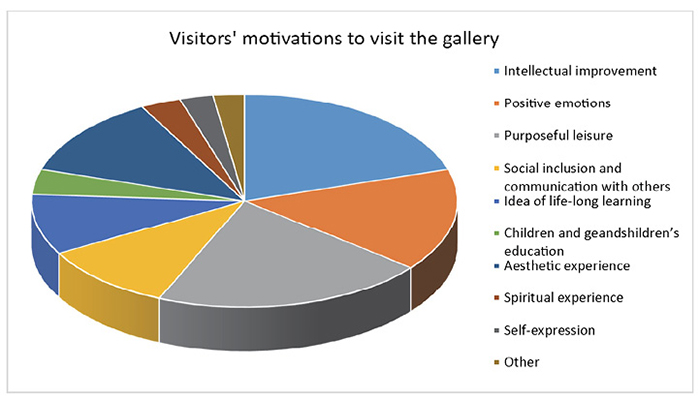
Fig. 4. Visitors’ motivations to visit the gallery
When asked about the factors that promote visits to galleries or museums, visual art experts mention various aspects that in some way correlate with the results and theoretical insights of the quantitative survey of visitors.
According to Expert No. 1, “Dispersion of information presented in an attractive manner is one of the motives that encourage visitors to come. Marketing campaigns, including celebrating celebrations of certain social groups (collectives), merging of student groups and visits to exhibitions.”
“Hospitality of a museum or gallery is very important, i.e., how the visitors are welcomed both personally and in terms of the environment. Aesthetic environment and hygienic conditions (ability to have a bite, coffee, use clean bathrooms) are essential; knowledgeable staff; ensured accessibility for everyone; renewable exhibits and new animation forms of the same exhibitions; educational programme, tours with well-known people/guides, a tour by an expert with a discussion with coffee, etc.” (Expert No. 8). Expert No. 10 thinks that relevant exhibition topics, known artists and content are important. Clear and attractive public information. Convenient communication and working hours. Most of these means are applied in the process of our organisational management.” Expert No.6 emphasises the importance of more simple communication language and advertising. “Museums lack advertising,” the expert claims.
Expert No. 2 sees satisfaction in spending time in the space as factors that motivate to visit the gallery. The aesthetics of an exhibition and interior is important. After reconstruction, the Čiurlionis gallery recovered. A masterpiece must be displayed respectively.” Another representative of the museum – Expert No. 4 – claims that according to surveys and exhibition organisation experience, it is important to include the viewer into the process itself, whereas Expert No. 3 says that “people want to hear and see something close to their hearts or related to them. Visitors are not interested in the ABC of painting, they are interested in life.”
In order to find out and respond to visitors’ expectations, it is important to understand what they expect from the museum or gallery visit. The survey reveals that visitors would be more often motivated to visit the gallery by more interesting and relevant content of the exhibits (21%) and more frequent meetings with modern creators and curators (19%). As many as 15% of the respondents would like to get more information about the content of the gallery during their visit. 14% of the respondents would be motivated by a cosier environment and an opportunity to spend their free time in the gallery. Less motivating, but also desirable in the gallery programme are interactivity-based projects (11%), interdisciplinary projects (7%), diversity of creative occupations and an opportunity to express oneself (6%) and educational occupations for adults (5%). Visitor distribution according to what they would be motivated by to visit the gallery more often is presented in Figure 5.
Visitors go to the gallery alone, with friends or family members. The most important factors that motivate visitors to go to the Kaunas Picture Gallery are purposeful leisure, intellectual improvement and positive emotions. The list of their needs includes more relevant and interesting content of the exhibitions, meetings with artists and curators, cosier environment and an opportunity to spend their free time in the gallery.
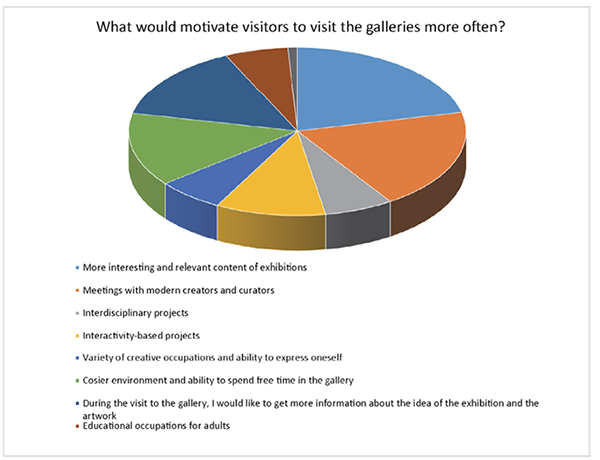
Fig. 5. What would the visitors be motivated by to visit the gallery?
As the most motivating factors to visit he gallery, experts name intellectual improvement, purposeful leisure, general interest in culture, aim to detach from the daily routine, socialisation, aesthetic environment, informal knowledge, getting to know other cultures. According to experts, visitors would be motivated to visit galleries more by attractive public information, marketing campaigns, aesthetic environment and hygienic conditions (ability to have a bite, have coffee, use clean bathrooms), positive and informative staff.
Relevant exhibition topics and content, convenient communication and working hour, inclusion of visitors into the process and discussion of topics related to them in some way. Visitors mostly go to the gallery during openings of exhibits. This was became clear after the survey. This was also confirmed by the experts.
Attitude of gallery visitors towards offers created by the organisation
In the context of the study, not only the initiatives of the Kaunas Picture Gallery, but also events organised by other cultural operators in the aforementioned space were provided for visitor evaluation. The visitors were asked to rate Kaunas Biennial exhibitions organised by Public Institution Kauno Bienale (director – Kotryna Zemaityte) according to predefined criteria. The data shows that the event is evaluated positively in all aspects.
Exhibition concepts as interesting and relevant were evaluated by 54% of the Kaunas Picture Gallery visitors, whereas they were evaluated as average by 17%, and negatively – by 28% of the respondents. According to the quality of presented art, Kaunas Biennial is evaluated positively by 47%, as average – by 29%, and negatively – by 24% of the respondents. The educational programmes of Kaunas Biennial were evaluated positively by 53%, as average – by 26%, and negatively – by 21% of the respondents. Provision of communication as clear, easy to understand and detailed was evaluated by 49%, as average – by 31%, and negatively – by 20% of the respondents. Staff communication was evaluated positively by 60% of the Kaunas Picture Gallery visitors, as average – by 21%, and negatively – by 19% of the respondents. Rating of Kaunas Biennial is presented in Figure 6.
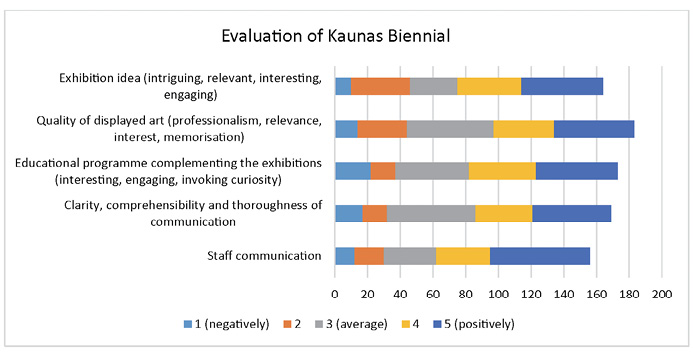
Fig. 6. Evaluation of Kaunas Biennial
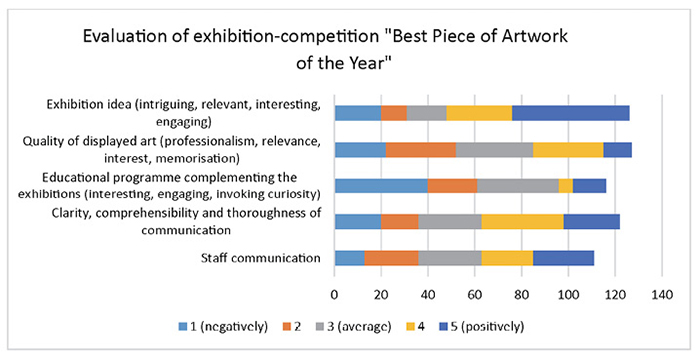
Fig. 7. Rating of the exhibition event “Best Piece of Artwork of the Year”
It is important to figure out how gallery visitors evaluate long-term gallery initiative exhibition-competition “Best Piece of Artwork of the Year” organised by the staff of the Kaunas Picture Gallery. The idea of the exhibition was evaluated positively by 62%, as average – by 13%, and negatively – by 26% of the respondents. According to the quality of displayed art, the respondents evaluated the project more negatively (positively – 33%, as average – 26%, and positively – 41%). Educational programme of the project was also evaluated more negatively than positively (positively –17%, as average – 30%, negatively – 53%). Clarity, comprehensibility and thoroughness of the communication was evaluated more positively than negatively (positively – 48%, as average – 22%, negatively – 30%). The respondents evaluated the event based on staff communication more positively (43%), whereas as average – 24%, and negatively – 32%. Rating of the exhibition event “Best Piece of Artwork of the Year” is introduced in Figure 7.
Generally, the activities of the Kaunas Picture Gallery and its events were evaluated positively by the visitors. The quality of the displayed art was evaluated positively by 61%, as average – by 29%, and as negative – by 10% of the respondents. Educational programmes carried out in the gallery were evaluated as average. Only 37% of the respondents evaluated them positively, 33% - as average, and 30% of the respondents evaluated these educational programmes negatively. Based on communication, the gallery is evaluated positively (60%), as average – by 20%, and negatively – by 20% of the respondents. Communication of the staff of gallery was evaluated more positively (positively – by 59%, on average – 24%, negatively – by 17% of the respondents). The data of visitors’ evaluation reveals that the educational programmes are evaluated in an ambiguous manner. Such results show that the package of educational services can be: 1. Not communicated fully and/or in the process of communication; 2. Offers are not developed and/or unattractive; 3. There is insufficient number of options of educational programmes for various interested segments. Experts in the sector name this problem as an especially relevant one as well (Expert No. 9, Expert No. 10).
The events presented in the Kaunas Picture Gallery are evaluated in an ambiguous manner. The Kaunas Biennial exhibition organised in the gallery was evaluated positively, whereas the exhibition-competition “Best Piece of Artwork of the Year” – negatively. Questions about the project “Mazosios istorijos” (En. The Tiny Stories) that has been organised for a few years reveal that visitors are not familiar with this initiative; only one third of the respondents evaluated this initiative; however, they evaluated it positively. Questions about educational programmes reveal that visitors are not familiar with such services provided by the gallery, they do not use them and thus are not able to evaluate them; however, the study revealed that such programmes have an impact.
Consumers‘ attidute to accessibility and infrastructure of the gallery
The infrastructure of the gallery were evaluated average by its visitors. 22% of respondents believe that infrastructure of the gallery is perfect. 23% of visitors are satisfied by gallery’s infrastructure. For 37% of respondents the infrastructure of the gallery did not match with the contemporary worlds’ standards. 5% of visitors missed the services if you want to visit the gallery with a child. 4% of visitors mentioned the problem to seek the gallery for the disabled people. Visitors attitude to gallery‘s infratructure are shown in Figure 8.
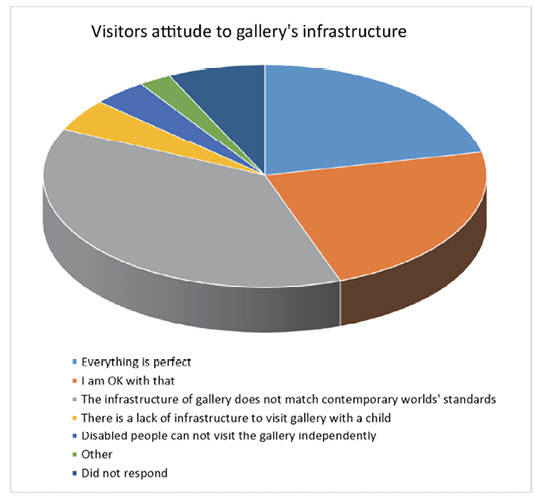
Fig. 8. Visitors attitude to gallery’s infrastructure
Experts of visual art stated that infrastrucure of gallery has great impact for its attendance. “The attendance of Kaunas Picture gallery, as the most neglected division of the Ltihuanian museum, is the evidence of this. From the very entrance you know what to expect and the first aesthetic disappointment depreciates even the quality of exhibitions” (Expert No. 8). The leader of the todays‘ biggest cultural event in Lithuania believes that infrastructure of the organisation 90% influences its attendance. Expert No. 10 stated that „the attractive infrastructure could be the crucial factor to visit visual art institution“ and as the main problem of the infrastructure notes “the lack of accessibility for disabled”.
Expert No. 6 stated that infrastructure is very important. We should have the highest level of all components in case to seek the most quality. As the main problems she notes the condition of the buildings and accessibility issues for the disabled.
Expert No. 5 have no doubts of the value of augmented services in museums. “If person expects to spend his or her time comfortably in cultural area, so the surroundings should provide that. If visitor come with family, s/he should have the possibility to leave the child in specially for them dedicated areas. As expert No. 4 stated: „This would not attract more people to visit the gallery, but it would help to seek more satisfaction and to get higher comfort level while visiting the gallery”.
Infrastructure of the gallery have significant impact for its attendance. Gallery’s infrastructure was evaluated sceptical by its visitors, while experts the attendance rates of gallery’s relates especially to the problems of infrastructure. Some experts said that augmented services in gallery can increase the amount of visitors, while others stated that this only would add more comfort to regular visitors.
Conclusions
Visitors go to art organisations based on various motives such as cognitive, social, aesthetic, internal. From the personal identity-related motivations point of view, a visual art institution serves as a confirmation tool of an individual’s values and attitudes that allows to not only know art, but also confirm one’s beliefs. Visual art consumers usually expect this during a visit to a museum or a gallery. If it is successful, visitors feel the highest level of satisfaction, the need to return and continue using such services.
The study reveals that gallery visits depend less on artefacts or collections, and more on the relationship to the collection and the level of comfort and service accessibility – aesthetic environment, convenient plan of the space, ample information on the content in any form, staff behaviour, access for various social groups. Therefore, within the scope of consumer evaluation, not only the main services provided by an organisation, i.e., objects of art, exhibitions and events, but also the extensive ones, i.e., aesthetics of the environment, references that ensure convenient mobility, a parking lot, a café or a restaurant, mother and child’s room. These are the aspects that a service receiver expects, and they can be crucial in determining whether to consume the services provided by a visual art institution or not.
The study revealed that the visitors of the Kaunas Picture Gallery evaluate the services and infrastructure of the organisation controversially. Some initiatives organised by the gallery’s staff are evaluated less than averagely, while others – recent initiatives and educational programmes – are not evaluated due to many of the respondents’ inability to do so. This shows that (1) consumers are not sufficiently related to the gallery’s activities and the relationship is not developed, (2) there is a lack of strong communication strategy that aims at different levels of consumer network development and audience growth. The list of gallery consumer expectations includes more interesting and relevant content of exhibitions, meetings with artists and curators, cosier environment and opportunity to spend free time in the gallery.
Literature
Ahola, Eeva-Katri. (2008). Art Museum Image – An Interplay of Consumer and Museum Characteristics. Museum and Visual Art Markets. Helsinki School of Economics, pp. 21-32.
Christidou, Dimitra. (2010). Re-Introducing Visitors: Thoughts and Discussion on John Falks Notion of Visitors’ Identity-Related Visit Motivations. Institute of Archaeology, 20, p. 111–122.
Doering, D. Zahava. (1999). Strangers, Guests or Clients? Visitor Experiences in Museums. Smithsonian Institution. [Interactive]. Retrieved from: <https://www.si.edu/content/opanda/docs/Rpts1999/99.03.Strangers.Final.pdf>. [Viewed 9 August 2019].
Doering, D. Zahava, Pekarik, J. Andrew. (1996). Questioning the Entrance Narrative. Journal of Museum Education. Vol. 21:3, pp. 20-23.
Falk, H. John. (2009). Identity and the Museum Visitor Experience. Walnut Creek, CA: Left Coast Press.
Falk, H. John. (2016). Viewing the Museum Experience Through an Identity Lens. Visiting The Visitor: An Enquiry Into the Visitor Business in Museums. Columbia University press.
Goffman, Erving. (1959). The Presentation of Self in Everyday Life. New York: Doubleday.
Hood, G. Marilyn. (1991). Significant Issues in Museum Audience Research. A Journal of Visitor Behaviour. Hood Associates, Columbus, Ohio, p. 18-23.
Hooper-Greenhill, Eilean. (2000). Museums and the Interpretation of Visual Culture. London-New York: Routledge.
Kotler, Neil G. (2003). Creativity and Interactivity: New Ways to Experience, Market and Manage Museums. Deakin University, Toorak Campus. [Interactive]. Retrieved from: <https://www.deakin.edu.au/__data/assets/pdf_file/0005/299228/kotler-2003.pdf>. [Viewed 26 September 2019].
Kotler, Neil. G., Kotler, Philip, Kotler, Wendy. I. (2008). Museum Marketing and Strategy. Designing Missions, Building Audiences, Generating Revenue and Resources. Published by Jossey-Bass, A Wiley Imprint.
Uusitalo, Liisa. (2008). On the Consumption of Pictorial Art. Museum and Visual Art Markets. Helsinki School of Economics, pp. 133-145.
Uusitalo, Liisa. (2008). The Roles of Art Museums – Challenges To Their Marketing. Museum and Visual Art Markets. Helsinki School of Economics, pp. 7-20.
Zbuchea, Alexandra. (2008). Marketing As Key Element in Achieving Museum‘s Mission. Tyragetia II (XVII), 2, pp. 65-71.
Waltl, Christian. (2006). Museums for Visitors: Audience Development – A Crucial Role for Successful Museum Management Strategies. [Interactive]. Retrieved from: <http://resourcelists.ntu.ac.uk/items/12595905-A5BB-0624-8B7F-AEF99C253681.html>. [Viewed 16 October 2019].